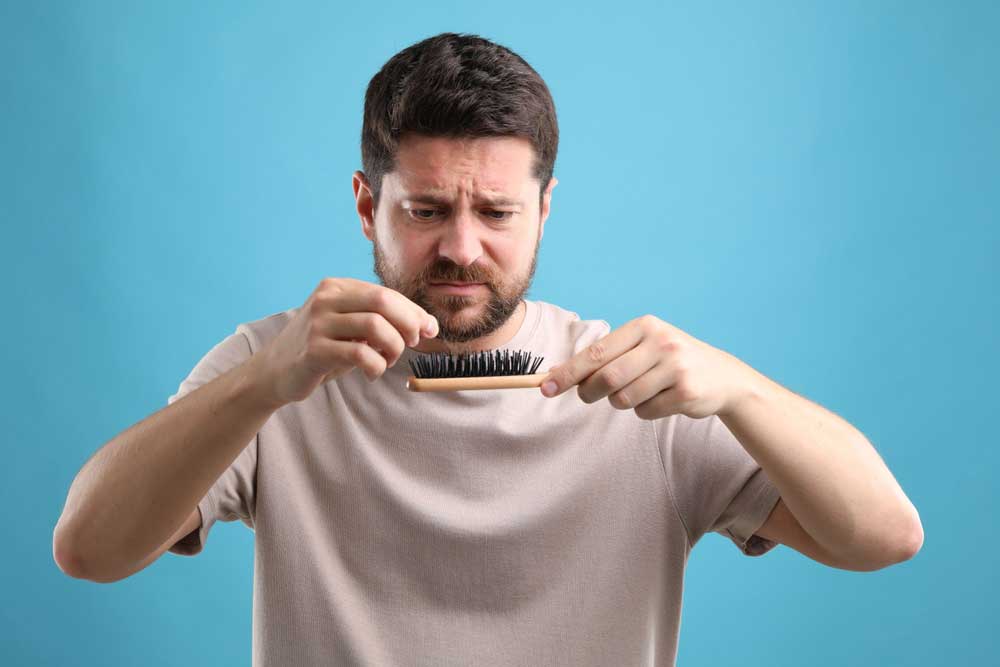Follicular Unit Extraction (FUE) is one of the techniques for obtaining donor hair for hair transplantation. FUE is a technique that requires more skill on the part of the physician hair restoration specialist and more cost on the part of the patient than the technique of strip harvesting (removal of a strip of scalp tissue bearing hundreds of follicular units). It is also a technique with potential benefit for the patient in less donor-site scarring, although small polka-dot scars may appear at sites of follicular unit extraction.
FUE removes one follicular unit (FU) at a time, targeting the FUs that appear most likely to thrive and produce hair in a transplant recipient site.
Here at Hair By Dr. Max, Restoration Center, Dr. Max uses a Neograft® or device by Trivellini Tech® called the MAMBA device for our FUE procedures. Neograft® allows simultaneous excision and harvesting helping with instantaneous quality control. It is especially useful with patients with curly hair or African-Americans. The grafts are collected in small irrigated containers. The process of Neograft® harvesting is straightforward and fast.
Mamba device is compact, lightweight but with a host of features that gives you unprecedented surgical freedom. The MAMBA features individually adjustable rotation functions, oscillation, mechanical vibration, and vacuum, which provides unique and unmatched graft extraction quality.
HOW DOES IT WORK?
1. Initial Consultation
During a consultation, Dr. Max will decide if Manual FUE is the correct route to go for your procedure. He will work with you to create a personalized treatment plan, based on your unique goals and preferences. This also allows you to learn more about the whichever procedure you choose to go with. We believe complete transparency and understanding is imperative to make sure the patient feels as confident and comfortable during the surgery as possible.
2. Prepping
Before the procedure begins, the donor area of the scalp will be prepped. Local anesthesia will then be administered thus making the procedure completely painless. The subject of pain is very often brought up when discussing a hair transplant, for obvious reasons, as it is a medical procedure. However, there is no need for concern regarding this. Dr. Max and his team are very attentive throughout all steps of the procedure, making sure everything is as perfect as it should be.
3. Collection of Grafts
After prepping is finished, Dr. Max and his team begin the harvesting process of the procedure. This step is characterized by:
- Isolation of the FUs with manual punch (0.6 to 0.9 mm diameter)
- Extraction of FUs with microclips
4. Quality Control
This is achieved via microscopes under the watchful eye of a certified hair expert. In order to create a natural result, Dr. Max and his team separate the grafts by follicular quantity. This is crucial because certain areas have a predetermined follicular unit.
5. Implantation
After all the grafts are separated by follicular quantity, Dr. Max then begins the implantation process. This step is characterized by:
- Micro-incisions in the balding area (fine needle or micro scalpel) and graft placement in the incisions
- Direct Graft Implantation (DGI): with an Implanter Pen
6. See Your Results
Patience is something many patients struggle with at this step, understandably so. However, it is imperative to focus more on taking care of your post-transplant hair rather than stressing over the growth prematurely. As far as a relatively general timeline for growth, the results from your procedure will be quite noticeable around 6 months after your procedure. So, be sure to take pictures beforehand to track your progress!


